Introducing Sora AI, a groundbreaking text-to-video AI set to revolutionize multi-modal AI in 2024. Tell us about Sora AI’s capabilities, innovations, and potential impact.
Introduction:
Sora AI is an upcoming generative artificial intelligence model developed by OpenAI(the pioneering team behind ChatGPT) that specializes in creating text-to-video. The model can create realistic short video clips and imaginative scenes from user text instructions. It can also extend existing short videos. It is not released and is not yet available to the public.
We’re teaching AI to understand and simulate the physical world in motion, with the goal of training models that help people solve problems that require real-world interaction. We are also granting access to several visual artists, designers, and filmmakers to gain feedback on advancing the model to be most helpful for creative professionals.
Sora AI will be very helpful in assessing critical areas for harm or risks for red teamers. We’re sharing our research progress early to start working with and get feedback from people outside of OpenAI.
Sora AI can create complex scenes with multiple characters, specific types of motion, and accurate details of the subject and background. The model understands what the user has asked for in the prompt and how those things exist in the physical world. It can also create multiple shots within a single generated video that accurately preserves visual style and characters.
The current model is still improving. It might have trouble showing how things move and interact in a complex scene and may not get certain cause-and-effect details (for example, a cookie might not show a mark after a character bites it). It may also confuse spatial information in a prompt, such as discerning left from right, or struggle with precise descriptions of events that unfold over time, like specific camera trajectories.
Those who are not deeply engaged in social media trends or specialized tech communities dont know the importance of Sora AI. Its introduction was subtle, without the spectacle of a grand launch, yet its impact is undeniable.
( You give this prompt and check on Sora becomes available to the public.
[Prompt: This close-up shot of a Victoria-crowned pigeon showcases its striking blue plumage and red chest. Its crest is made of delicate, lacy feathers, while its eye is red. The bird’s head is tilted slightly to the side, making it look regal and majestic. The background is blurred, drawing attention to the bird’s striking appearance. ] )
OpenAI has showcased several examples of Sora’s capabilities, where the AI how impressively creates videos with remarkable realism. These sample videos show Sora’s ability to portray complex scenes with intricate details, including mirror reflections, the dynamic movement of liquids, and the gentle fall of snowflakes.
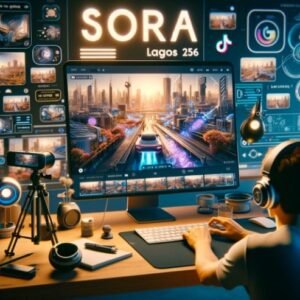
History
Before Sora AI, several other text-to-video generating models had been created before Sora, including Meta’s Make-A-Video, Runway’s Gen-2, and Google’s Lumiere, the latter of which is still in its research phase as of February 2024. In September 2023, OpenAI, the company behind Sora, released DALL·E 3, the third iteration of its DALL-E text-to-image models.
The team that developed Sora named it Sora, after the Japanese word for “sky,” to signify its “limitless creative potential.” OpenAI first previewed Sora by releasing multiple clips of high-definition videos that it created on February 15, 2024, which include an SUV driving down a mountain road, two people walking through Tokyo in the snow, an animation of a “short fluffy monster” next to a candle, and fake historical footage of the California gold rush, and stated that it was able to generate videos up to one minute long. Then, the company shared a technical report detailing the methods used to train the model.
OpenAI CEO Sam Altman also posted a series of tweets, replying to Twitter users’ prompts with Sora-generated videos. The company announced that they are planning to make Sora available to the public, but when it has not been decided.
The company has given limited access to a small “red team” that includes experts in misinformation and bias to perform adversarial testing on the model. The company also shared Sora with a small group of creative professionals, including video makers and artists, to seek feedback on its usefulness in creative fields.
Capabilities and limitations:
The technology behind Sora is an adaptation of the technology behind DALL-E 3.
Sora, the advanced technology developed by OpenAI, is an adaptation of the DALL-E 3 technology. It is classified as a diffusion transformer, specifically a denoising latent diffusion model with a Transformer serving as the denoiser.
The process involves generating a video in latent space by denoising 3D “patches,” which are then transformed into standard space by a video decompressor. To augment the training data, a video-to-text model is employed to create detailed captions on videos, known as re-captioning.
OpenAI has utilized publicly available and licensed copyrighted videos to train the model, though these videos’ specific numbers and sources have not been disclosed. Upon its release, OpenAI acknowledged several Sora limitations.
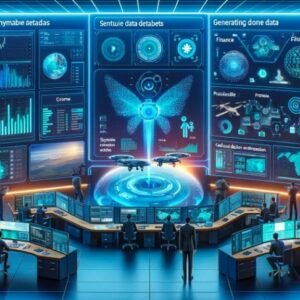
These include difficulties in simulating complex physics, understanding causality, and differentiating left from right. For example, a scenario involving wolf pups was observed where the pups appeared to multiply and converge unrealistically, making the scenario difficult to follow.
Sora is designed with safety measures to restrict text prompts related to sexual, violent, hateful, or celebrity imagery and content featuring pre-existing intellectual property. Tim Brooks, a researcher on Sora, noted that the model learned to create 3D graphics independently from its dataset.
At the same time, Bill Peebles highlighted the model’s capability to generate different video angles without explicit prompts automatically. Additionally, OpenAI ensures that Sora-generated videos are tagged with C2PA metadata to indicate their AI-generated origin.
Despite its impressive capabilities, Sora has several notable limitations. It lacks an implicit understanding of physics, leading to inconsistencies with real-world physical rules. For instance, in a video where a basketball hoop explodes, the net is shown to be restored post-explosion, defying real-world logic.
Similarly, the spatial positioning of objects may shift unnaturally, as seen in a video of wolf pups where the animals appear and disappear spontaneously, sometimes overlapping in position.
The model’s limited comprehension of cause and effect further questions its reliability. OpenAI’s showcased examples are of high quality, but it is unclear to what extent these outcomes resulted from selective presentation. In text-to-image generation, it is common to produce numerous images, selecting only the best outputs.
It could hinder widespread adoption if generating hundreds or thousands of videos is necessary to achieve one satisfactory result. A comprehensive evaluation of Sora’s usability and effectiveness will be possible only once the tool becomes widely available, emphasizing the importance of understanding Sora AI’s current capabilities and limitations.
Safety:
OpenAI is committed to ensuring the safety of Sora before making it available in their products. They are collaborating with red teamers—domain experts in misinformation, hateful content, and bias—who will test the model adversarially.
Additionally, tools are being developed to detect misleading content, such as a detection classifier that can identify videos generated by Sora. Future deployments of the model in OpenAI products will include C2PA metadata.
Leveraging existing safety methods built for DALL·E 3, OpenAI will apply these techniques to Sora. For instance, text input prompts that violate usage policies (such as those requesting extreme violence, sexual content, hateful imagery, celebrity likeness, or intellectual property) will be rejected by a text classifier. Robust image classifiers will review the frames of every video generated to ensure adherence to usage policies before the video is shown to the user.
Engagement with policymakers, educators, and artists worldwide is part of OpenAI’s strategy to understand concerns and identify positive use cases for Sora. Despite extensive research and testing, predicting all beneficial uses and potential abuses of the technology is challenging, reinforcing the importance of learning from real-world applications to create and release increasingly safe AI systems over time.
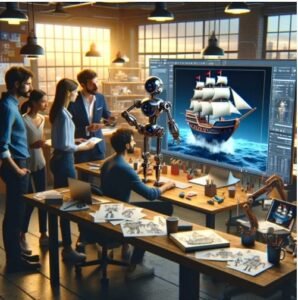
Unanswered Questions on Reliability:
The reliability of Sora remains uncertain. While OpenAI has showcased high-quality examples, it is unclear how much cherry-picking was involved. In text-to-image tools, generating multiple images and selecting the best one is common.
OpenAI could impede adoption if it needed to create hundreds or thousands of videos to present the showcased examples. Understanding the extent of effort the OpenAI team requires to curate these videos is crucial for evaluating the tool’s efficiency and practicality. A comprehensive assessment of Sora’s reliability will be possible only once it becomes widely available.
Research Techniques:
Sora AI operates as a diffusion model, generating videos by starting with static noise and gradually transforming it by removing it over multiple steps. It can generate entire videos at once or extend existing ones, maintaining subjects’ consistency even when they temporarily go out of view.
Like GPT models, Sora uses a transformer architecture, allowing superior scaling performance. Videos and images are represented as collections of smaller data units called patches, akin to tokens in GPT. This unified data representation enables diffusion transformers to be trained on a broader range of visual data, covering different durations, resolutions, and aspect ratios.
Building on past research in DALL·E and GPT models, Sora employs the recaptioning technique from DALL·E 3, which generates highly descriptive captions for the visual training data. This ensures the model follows the user’s text instructions more faithfully in the generated video.
Sora can generate videos from text instructions, animate existing still images, extend existing videos, or fill in missing frames. This versatility makes Sora a foundational model for understanding and simulating the real world, marking a significant milestone toward achieving AGI.
Next-Gen Video Creation Examples:
OpenAI and CEO Sam Altman have shared some prompt examples of Sora in action, showcasing different styles and scenarios:
- Sora Animation Examples:
i) A papercraft world of a coral reef full of colorful fish and sea creatures.
ii) An animated scene featuring a fluffy monster kneeling beside a melting red candle, rendered in a realistic 3D art style, focusing on lighting and texture. - Sora Cityscape Examples:
i) A bustling, snowy Tokyo city with Sakura petals and snowflakes flying through the wind.
ii) A futuristic city tour with advanced trams, beautiful fountains, giant holograms, and robots, guided by a human showing extraterrestrial aliens the city’s highlights. - Advertising and Marketing:
i) Creating cost-effective promotional videos, such as a drone view of Big Sur’s rugged cliffs and crashing waves. - Prototyping and Concept Visualization:
i) Generating AI mockups for product designs, like a photorealistic closeup of pirate ships battling inside a cup of coffee. - Social Media:
i) Creating short-form videos for platforms like TikTok and Instagram, including imaginative scenarios like Lagos in 2056.
How Sora Works:
Sora AI is a text-to-video generative model. This means you give any text prompt, and it will create a video that matches that prompt. Here’s an example from the OpenAI site:
[Check this prompt when Sora AI becomes available.]
[ PROMPT: A stylish woman walks down a Tokyo street filled with warm glowing neon and animated city signage. She wears a black leather jacket, a long red dress, and boots and carries a black purse. She wears sunglasses and red lipstick. She walks confidently and casually. The street is damp and reflective, creating a mirror effect of the colorful lights. Many pedestrians walk about. ]
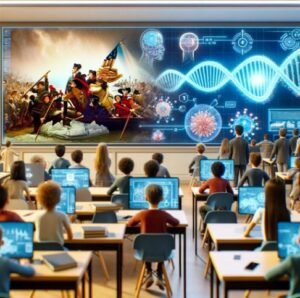
The current model is still improving. It might have trouble showing how things move and interact in a complex scene and may not get certain cause-and-effect details (for example, a cookie might not show a mark after a character bites it).
It may also confuse spatial details included in a prompt, such as discerning left from right, or struggle with precise descriptions of events that unfold over time, like specific camera trajectories.
Those who are not deeply engaged in social media trends or specialized tech communities dont know the importance of Sora AI. Its introduction was subtle, without the spectacle of a grand launch, yet its impact is undeniable.
[Prompt: This close-up shot of a Victoria-crowned pigeon showcases its striking blue plumage and red chest. Its crest is made of delicate, lacy feathers, while its eye is red. The bird’s head is tilted slightly to the side, making it look regal and majestic. The background is blurred, drawing attention to the bird’s striking appearance. ]
OpenAI has showcased several examples of Sora’s capabilities, where the AI how impressively creates videos with remarkable realism.
These sample videos show Sora’s ability to portray complex scenes with intricate details, including mirror reflections, the dynamic movement of liquids, and the gentle fall of snowflakes.
Use Cases of Sora:
Sora simplifies video creation for various applications, including:
- Synthetic Data Generation:
Creating synthetic data for training computer vision systems where data usage is restricted due to privacy or practicality issues. - Solving Temporal Consistency:
Ensuring objects remain consistent when they move in and out of view, addressing challenges in maintaining subject continuity. - Combining Diffusion and Transformer Models:
Leveraging the strengths of diffusion models (low-level texture generation) and transformers (global composition) to produce high-quality video content. - Increasing Fidelity of Video with Recaptioning:
Using detailed captions generated by GPT to enhance the accuracy and detail of the user’s prompt in the resulting video.
Potential Risks of Sora:
While Sora offers remarkable capabilities, it also poses potential risks similar to those associated with text-to-image models:
- Generation of Harmful Content:
Without guardrails, Sora could generate inappropriate or harmful content, such as violence, gore, sexually explicit material, hate imagery, and illegal activities. - Misinformation and Disinformation:
Sora’s ability to create convincing yet fantastical scenes could lead to the creation of “deepfake” videos, spreading false information and undermining trust in public institutions. - Biases and Stereotypes:
The output of generative AI models is influenced by the training data, which may contain cultural biases or stereotypes, resulting in biased or stereotypical content.
Accessing Sora AI:
Currently, Sora is available only to “red team” researchers and select visual artists, designers, and filmmakers for feedback and testing. OpenAI has not specified a public release date, but it is expected to be sometime in 2024. The company is taking several safety steps and engaging with policymakers, educators, and artists to ensure the technology’s safe and beneficial use.
Alternatives to Sora AI:
Several high-profile alternatives to Sora exist, including:
A. Runway-Gen-2: A text-to-video generative AI available on web and mobile platforms.
B. Lumiere: Announced by Google and available as a PyTorch extension.
C. Make-a-Video: Announced by Meta and also available via a PyTorch extension.
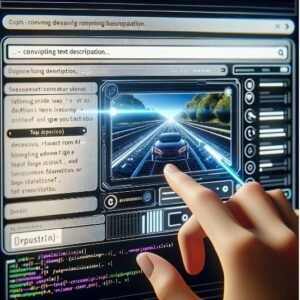
Smaller competitors include:
A. Pictory: Targeting content marketers and educators with its video generation tools.
B. Kapwing: Offering an online platform for creating videos from text.
C. Synthesia: Creating customizable avatar-led videos for business and educational purposes.
D. HeyGen: Simplifying video production for marketing, sales, and education.
E. Steve AI: Enabling
Conclusion:
OpenAI’s Sora AI is a major breakthrough in text-to-video technology, marking a key moment in generative video content. Sora is set to change how we create and interact with digital media, offering a glimpse into the future of content creation. The excitement around Sora suggests it will bring significant changes to the digital world, with people from various sectors eager to explore its potential.
Sora’s introduction goes beyond technological progress, blurring the line between imagination and digital reality. By turning text descriptions into high-quality videos, Sora makes video production more accessible to everyone, from professional filmmakers to amateur creators and educators. Sora’s AI-powered video generation opens new creative possibilities, transforming storytelling and experience sharing.
Currently, access to Sora AI is limited, heightening anticipation among creators worldwide. Content creators are eager to see how Sora can enhance their storytelling and visual content. Sora’s strength is in its technical capabilities and its potential to spark new forms of creativity and engagement, which are poised to transform the creative landscape.
The public release of Sora AI is highly anticipated and expected to make a big impact. Once widely available, creators will push the boundaries of video content, exploring new narratives and visual expressions. The launch of Sora will create excitement as it introduces a powerful tool for digital creativity. This signals the start of a new chapter in generative video technology.
Sora AI is a standout AI tool capable of producing videos that are up to one minute long from simple text prompts. For example, describing “a field of cats praising one giant dog” would result in a video showing this exact scene. This capability opens many possibilities for content creation.
Educators, amateur creators, professional filmmakers, and businesses can all benefit from Sora AI. It can generate engaging visual content for teaching, bring creative visions to life, aid in planning projects, and create promotional videos. Sora’s potential extends beyond these uses, inspiring new forms of creativity and endless possibilities.
In conclusion, Sora is a groundbreaking advancement in text-to-video technology, set to revolutionize digital media creation and interaction. Its ability to turn text into high-quality videos makes video production more accessible, sparking excitement and anticipation in the digital community as it ushers in a new era of generative video technology.
FAQ’s
1 ) What is Sora AI?
Answer: Sora AI is a text-to-video generative model. This means you give any text prompt, and it will create a video that matches that prompt.
2) What are the Risks of Sora AI?
Answer: As Sora AI is a new product, the risks are not fully described yet, but they may be the same as those of text-to-image models.
3) How Can I Access Sora AI?
Answer: Sora AI is currently only available to the “red team,” i.e., experts who are given the task of trying to identify problems with the model.
4) What Are the Alternatives to Sora AI?
Answer: The Alternatives to Sora AI are:
i) Runway-Gen-2
ii) Lumiere
iii) Make-a-Video
5) Are there competitors of Sora AI?
Answer: There are some smaller competitors:
i) Pictory
ii) Kapwing
iii) Synthesia
iv) HeyGen
v) Steve AI
vi) Elai
READ THIS ALSO…
iPhone 16 Reaching the Next Evolution | Know About Any Mobile
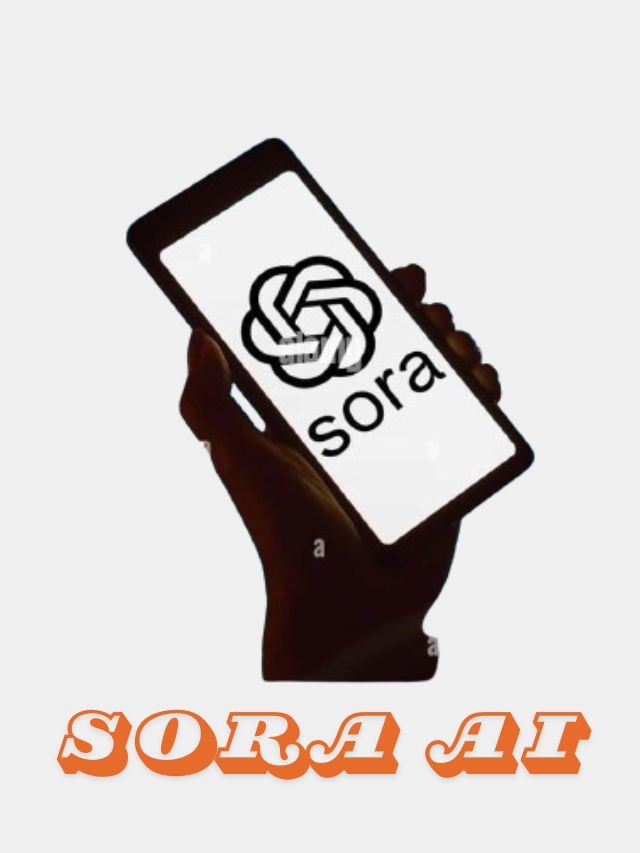
1 thought on “Introducing Sora AI , Transforming Content Creation with Cutting-Edge Video Technology”